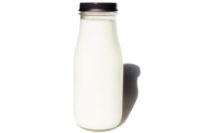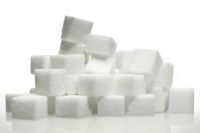TECH FLASH
Less salt? Researchers say not so fast
A recent study challenges the perception that US consumers desire products with less sodium.

As health officials and FDA prepare to issue voluntary guidelines on sodium for the food industry, research by the NPD Group is challenging the perception that US consumers desire products with less salt.
In a recent report, the global information company says concern regarding sodium intake is declining among US consumers and the consumption of foods labeled “low sodium” or “no salt” will continue to decline in the future.
The NPD Group says many consumers still regularly eat above the recommended daily sodium intake. Health officials recommend adults limit sodium to 2,300 mg a day.
“People are paying less attention to the basics on nutrition labels like sodium, calories, fats, and carbs, and more attention to sugar and protein,” says Darren Seifer, NPD food and beverage industry analyst. “Regardless of the available nutritional information and dietary guidelines, consumers are choosing to focus on what they deem important.”
Among US consumers, 60 percent say they are trying to cut down or avoid sodium. This is down from 68 percent in 2010, researchers say.
However, health officials continue to target sodium consumption.
For instance, the Million Hearts initiative, co-led by CDC and the Centers for Medicare and Medicaid Services, recently launched a new Healthy Eating and Lifestyle Resource Center featuring lower-sodium, heart-healthy recipes.
Earlier this year, FDA Commissioner Margaret Hamburg said sodium is of a “huge interest and concern” to the agency, which has plans to establish federal guidelines on ways to reduce the level of sodium in foods.
NPD recently published its report, “The Future of Eating: Who’s Eating What in 2018?” The report researchers concluded that in the next five years there will be a decline in purchases of foods with labels such as low sodium/salt free, low/reduced, fat/no fat, or whole grain/made with whole grain. This will be true across all generational groups except Generation Z.
“The challenges in getting Americans closer to the guidelines are multi-faceted. Salt is an important ingredient in making foods taste good. Simply removing sodium from foods and/or beverages will likely be met with consumer resistance,” Seifer says. “Eating habits are difficult to change unless a change is required because of a health condition. If food manufacturers and foodservice operators are able to reduce the sodium in foods and still make them taste as good, inroads will be made in reducing U.S. consumers’ salt intake.”
Looking for a reprint of this article?
From high-res PDFs to custom plaques, order your copy today!





